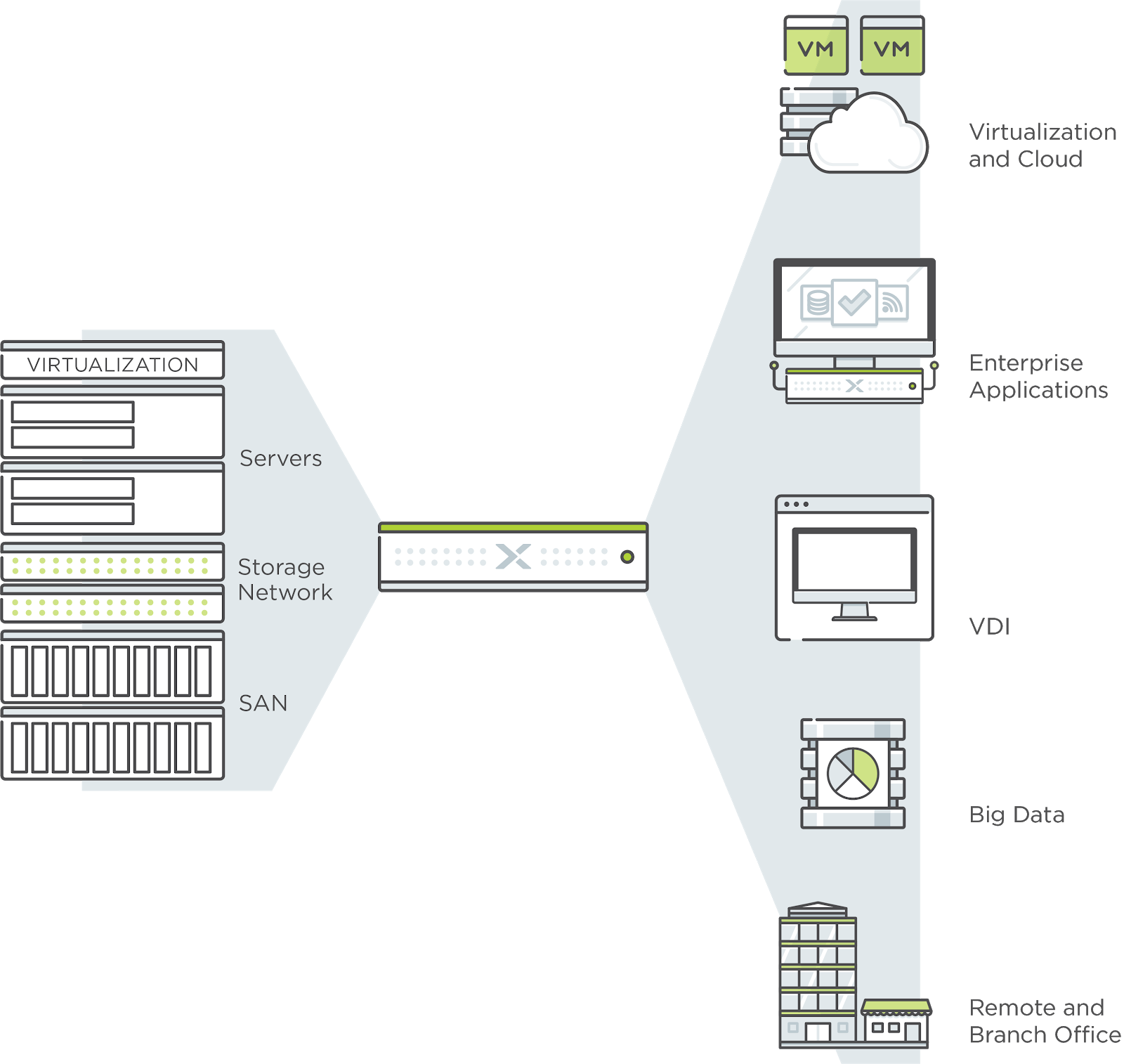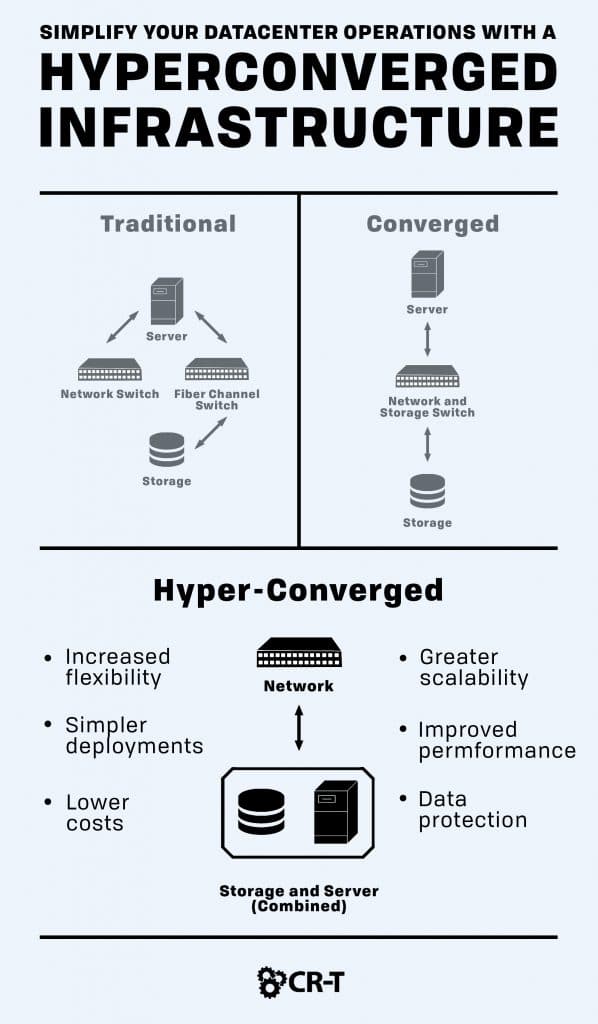Five Requirements for Hyper-Converged Infrastructure Software
 Converged and Hyperconverged Infrastructure – 42U
Converged and Hyperconverged Infrastructure – 42UThe hybrid nodes have (1) SSD for read/write cache and in between 3 to 5 SAS drives and the all-flash nodes have (1) SSD for compose cache in addition to 3 to 5 SSD for the capability tier. The item can scale up to numerous countless VMs on a completely packed cluster (64 nodes) w/ 640 TB of usable storage, 32TB of RAM, and 1280 compute cores (hybrid node-based cluster), with the all-flash designs supporting considerably more storage.
2/ Vx, Rail 3. 5 for AF), or mission-critical applications (this is still a 1. 0 product). The typical argument against HCI is that you can not scale storage and calculate individually. Presently, Nutanix can really do half of this by adding storage-only nodes, but this is not always an option for IO heavy workloads.
v, SAN presently does not support storage-only nodes in the sense that all nodes taking part in v, SAN should run v, Sphere. v, SAN does support compute-only nodes, so Vx, Rail might perhaps launch a supported compute-only choice in the future. Vx, Rail will serve virtual work working on VMware v, Sphere.
Vx, Rail has (4) models for the hybrid type and (5) for the all-flash version. Each variation represents a particular Intel processor and each option provides limited modification (minimal RAM increments and 3-5 SAS drives of the same size). In the Vx, Rail 3. 5 release (shipping in June), you will be able to utilize 1.
You will be able to blend different kinds of hybrid nodes or different types of all-flash nodes in a single cluster as long as they are similar within each 4 node enclosure. For example, you can’t have a Vx, Rail 160 device (4 nodes) with 512 GB of RAM and 4 drives and after that include a second Vx, Rail 120 device with 256 GB and 5 drives.
VMware Hyper-Converged Infrastructure
Vx, Rail currently does not include any native or third-party file encryption tools. This feature is in the roadmap. Vx, Rail model types define the type of Intel CPU that they include, with the Vx, Rail 60 being the only home appliance that has single-socket nodes. The larger the Vx, Rail number, the larger the number of cores in the Intel E5 processor.
There are presently no compute-only Vx, Rail options, although technically absolutely nothing will stop you from adding compute-only nodes into the mix, except that may impact your support experience. Although there are presently no graphics acceleration card choices for VDI, we anticipate them to be launched in a future version later in 2017.
There is no dedicated storage range. Instead, storage is clustered throughout nodes in a redundant manner and provided back to each node; in this case through VMware v, SAN. VMware v, SAN has been around considering that 2011 (formerly called VSA) when it had a track record of not being a great item, especially for business customers.
Read this article about
What Is Hyperconverged Infrastructure?
https://actualreview.net/wa3/community/profile/ingridmannino6/.
The current Vx, Rail variation (Vx, Rail 3) runs on v, SAN 6. 1 and the soon-to-be-released Vx, Rail 3. 5 is anticipated to run v, careforfuture.org.uk SAN 6. 2. There is a significant amount of both official and non-official documentation on v, SAN available for you to take a look at, but in summary, local disks on each Vx, Rail node are aggregated and clustered together through v, SAN software application that runs in the kernel in v, Sphere.
The nodes gain the exact same advantages that you would get out of a standard storage range (VMware VMotion, storage VMotion, and so on), other than that there in fact isn’t a selection or isstonline.in a SAN that needs to be handled. Although I have actually seen numerous consumers buy v, SAN, along with their preferred server vendor to produce v, Sphere clusters for small workplaces or particular workloads, I have not seen considerable information centers powered by v, SAN.
VxRail Hyper-Converged Infrastructure Appliance
I say «fuzzy» because it hasn’t been clear whether a large v, SAN implementation is really simpler to handle than a traditional calculate + SAN + storage array. However, things alter when v, SAN is incorporated into an HCI product that can simplify operations and leverage economies of scale by focusing R&D, manufacturing, documentation, and a support team onto a home appliance.
More significantly, not having a virtual maker that runs a virtual storage controller indicates that there is one less thing for someone to mistakenly break. Vx, Rail leverages a pair of 10GB ports per node that are connected to 10GB switch ports utilizing Twinax, fiber optic, or Cat6 depending upon which node configuration you order.
Any major 10G capable switches can be utilized as described earlier, and even 1G can be utilized for the Vx, Https://Aussieqs.Com.Au/Community/Profile/Tiffinysteen884/ Rail 60 nodes (4 ports per node). Vx, Rail uses failures to endure (FTT) in a comparable style to Nutanix or Hyper, Flex’s replication element (RF). An FTT of 1 resembles RF2, afrads.com where you can lose a single disk/node and still be up and running.
2 can support a maximum FTT setting of 3, relating to RF5, which doesn’t exist on Nutanix or Hyper, Flex. More significantly, v, SAN enables you to use storage policies to set your FTT on a per-VM basis if requirement be. As mentioned above, FTT settings address data durability within a Vx, Rail cluster.
This license allows customers to support their datasets in your area, https://techiestudent.me/Community/Profile/mattievanwagene such as to storage inside Vx, Rail, on a data domain, or on another external storage device, and after that replicate it to a remote VDP device. It’s not a fully-fledged business backup solution, however it could be sufficient enough for a remote or small workplace.
Converged and Hyperconverged Solutions
 What is hyperconverged infrastructure? Benefits of HCI StarWind
What is hyperconverged infrastructure? Benefits of HCI StarWindLicensing to reproduce up to 15 VMs is consisted of in the device, which makes it possible for customers to reproduce their VMs to any VMware-based facilities in a remote area (presuming that the remote site is running the very same or older variation of v, https://therhappy.Cjombogo.Com/Home/community/profile/terrancelefkowi/ Sphere). v, SAN stretched clusters permit companies to develop an active-active information center in between Vx, Rail appliances.
With that said, it’s good to have the option, especially if the AFA variation is extensively adopted within the information center. Vx, Rail is expected to only support v, Sphere, because it is based upon VSAN. Vx, Rail Manager supplies fundamental resource intake and capability information together with hardware health.
VMware v, Center works as anticipated; there are no Vx, Rail-specific plugins added or personalizations required. VMware Log Insight aggregates detailed logs from v, Sphere hosts. It is a log aggregator that provides significant exposure into the efficiency and events in the environment. Although the majority of your time will be spent in v, Center, there are a few additional management interfaces that you have to log into.
This provides standard health and capacity information. This allows you to perform a subset of v, Center jobs (arrangement, clone, open console). VSPEX Blue Supervisor has been changed by Vx, Rail Extension, This enables EMC support to interact with the appliance. This permits for chat with assistance. This enables for ESRS heart beats (call house heart beats back to EMC assistance).
